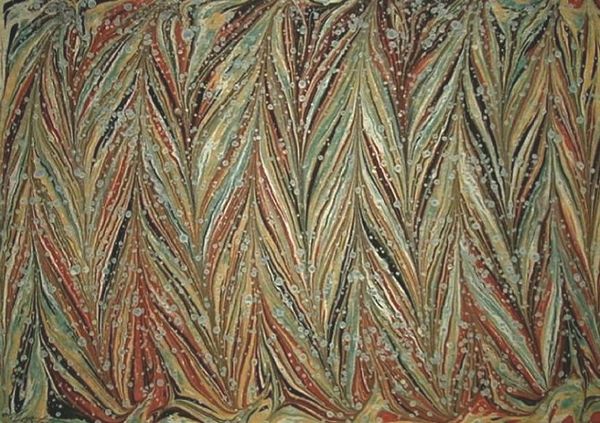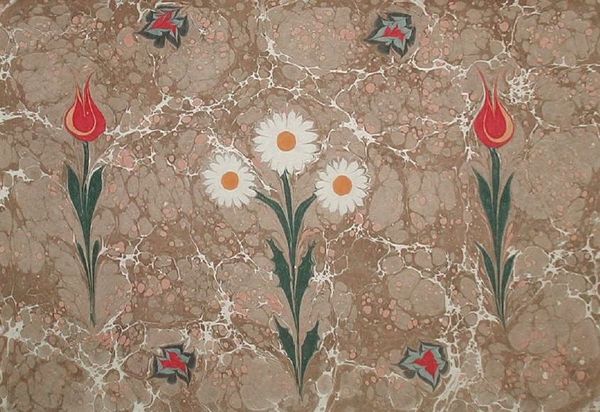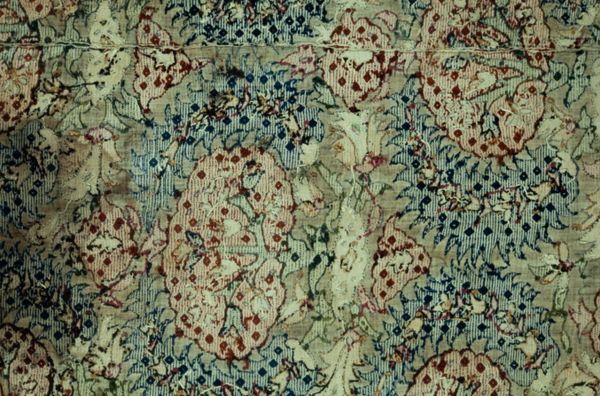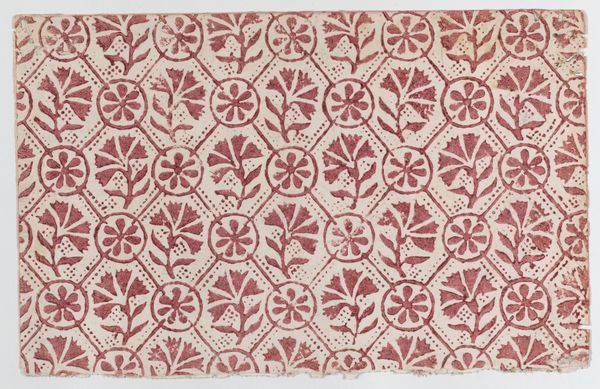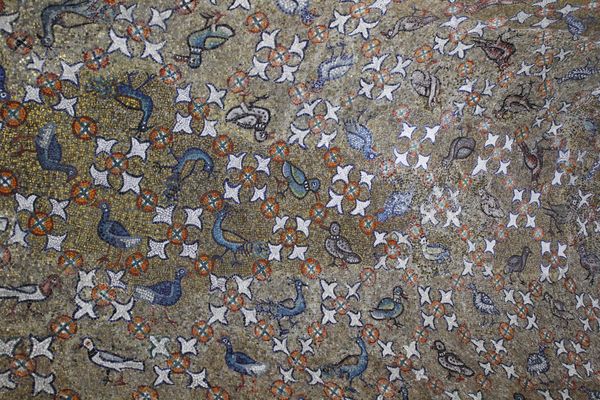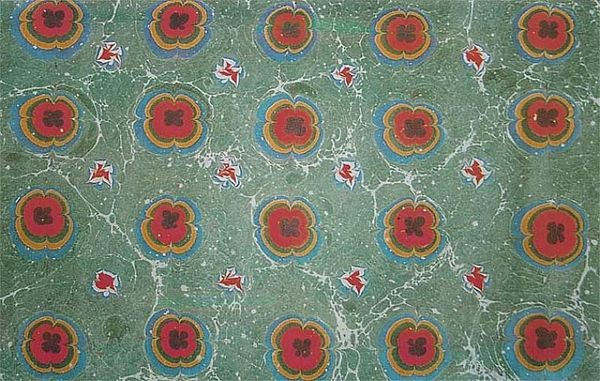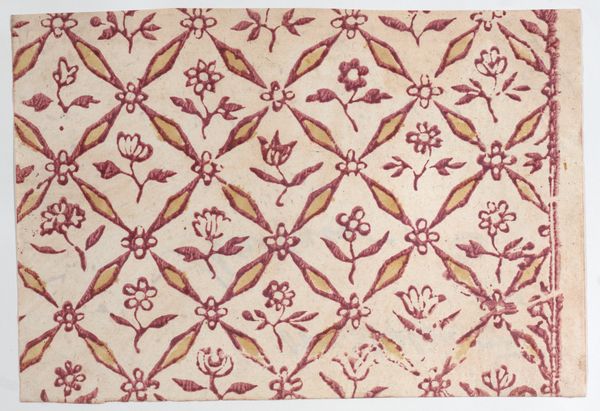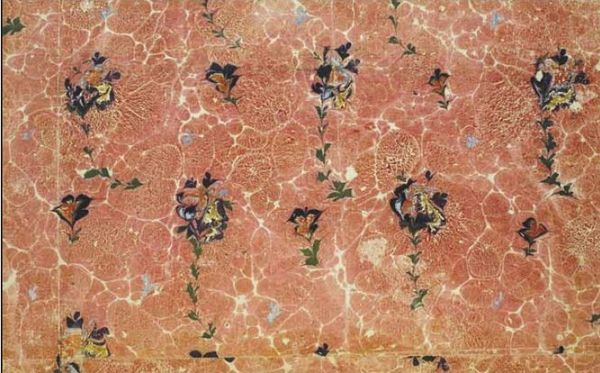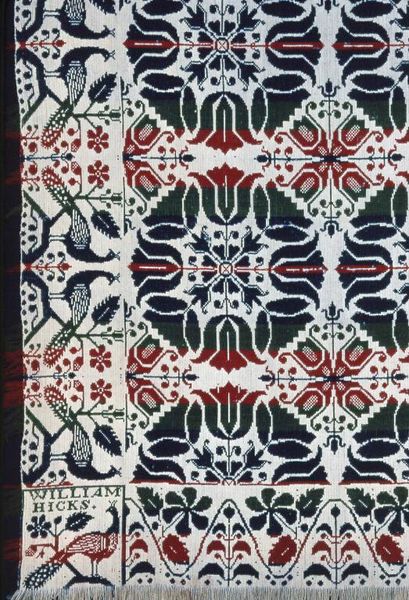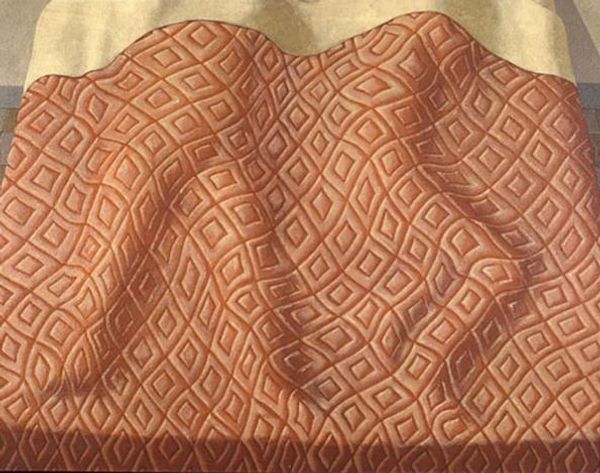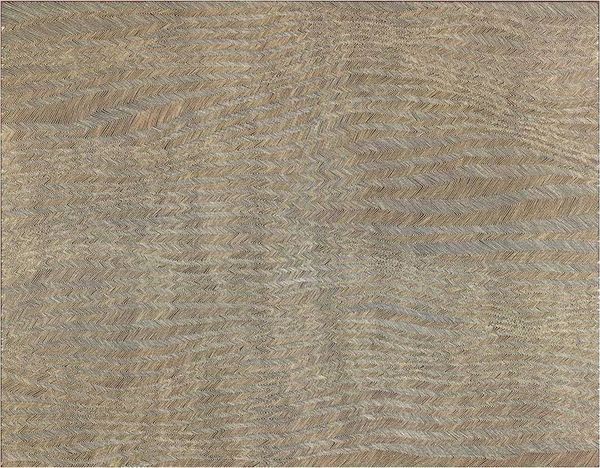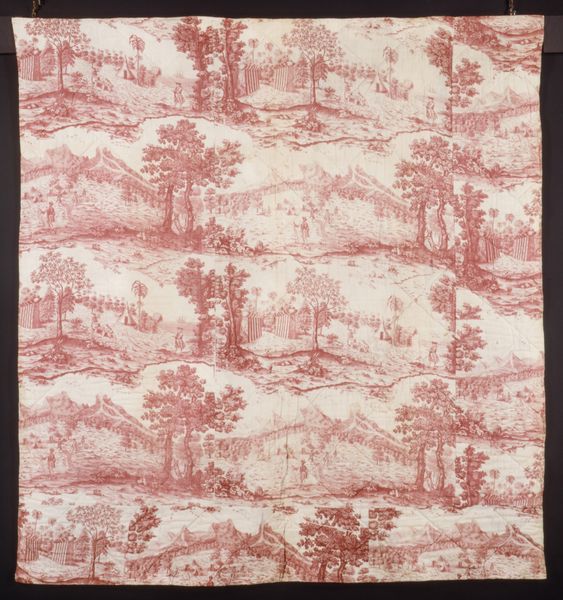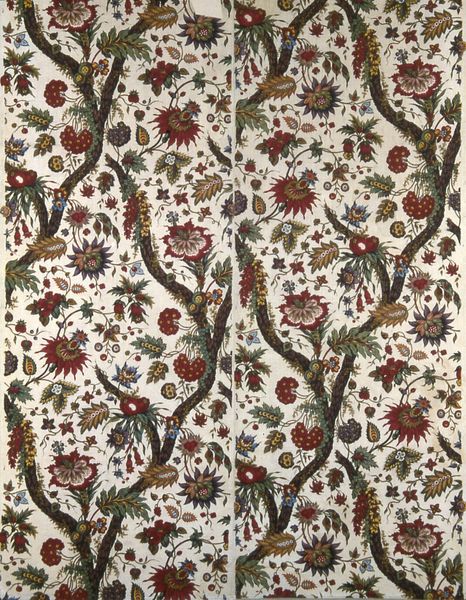
fibre-art, textile, paper, ink
#
fibre-art
#
organic
#
pattern
#
textile
#
paper
#
ink
#
organic pattern
#
islamic-art
Copyright: Public domain
Editor: So this is *Serpmeli gelgit ebru*, a marbled paper, likely created with inks. There's this swirling, organic pattern, with lots of red, green, and cream colors. It’s very evocative, reminding me of flowing water and leaves. What symbols or underlying meanings do you find in this work? Curator: Immediately, I see a beautiful tension. "Ebru," Turkish marbling, evokes both controlled technique and chance encounter. The Serpmeli gelgit ebru, or "combed back and forth" tide ebru, is not accidental at all. Editor: How so? Curator: Look closely. Do you see the repetition? While organic and flowing, the rhythm speaks of intention, of the artist carefully coaxing those lines and bubbles. The combed pattern also represents something in Ottoman culture…Think about stylized depictions of nature…what do they commonly imply? Editor: Harmony, perhaps? Beauty? Paradise? Curator: Exactly. The seemingly random patterns also served a specific function in Ottoman culture, often used to protect documents against forgery and preserve knowledge and ideas. What cultural echoes do you find within this type of application of nature? Editor: So the beauty we see isn't just decorative – it's integrated with themes of preservation and cultural identity? Fascinating! It makes you appreciate the patterns beyond their visual appeal. Curator: Precisely. Recognizing how even decorative techniques function as cultural memory helps us read the layers embedded in the simplest image. It adds such a rich layer.
Comments
No comments
Be the first to comment and join the conversation on the ultimate creative platform.
